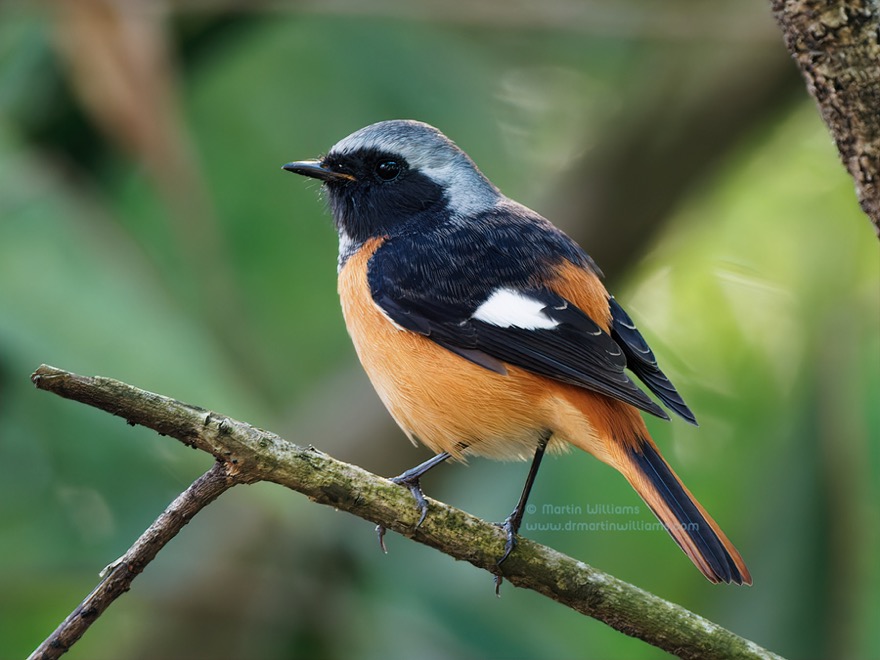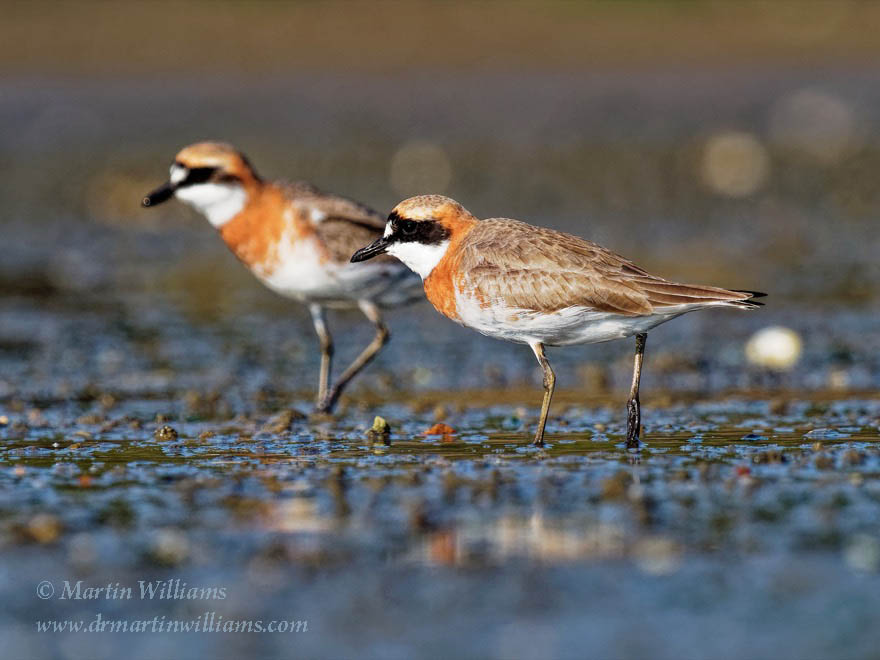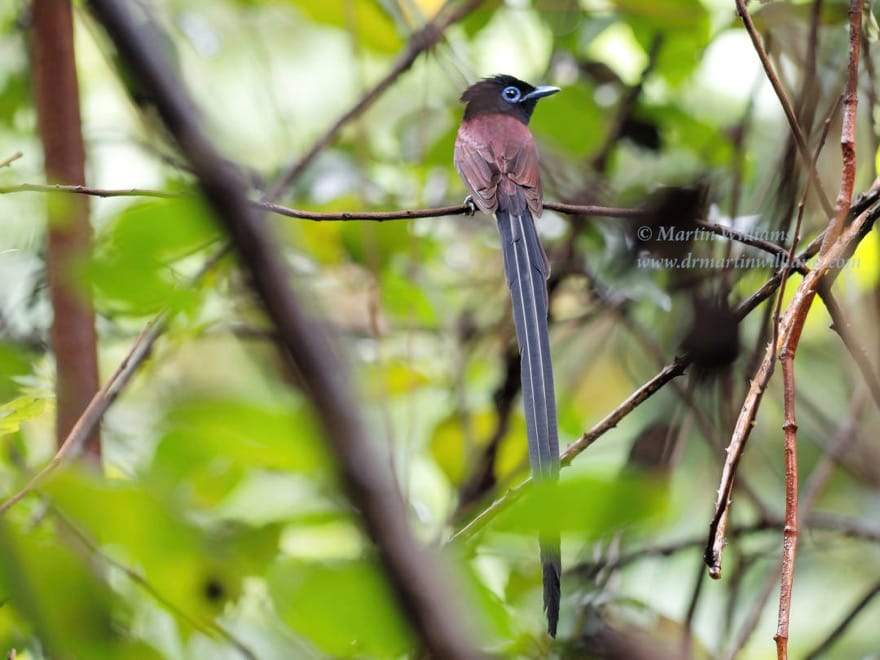Hong Kong is an excellent place for birdwatching.

Here, you can find global rarities that are tough to see elsewhere, encounter stunning songbirds, watch seabirds blasted inshore by typhoons (yes, typhoons – birdwatchers do far sillier things than just lurk in bushes), and savour waterbirds thronging the mudflats of Mai Po.
While Mai Po is Hong Kong’s best place for birdwatching, it’s far from being the only one. Interesting birds occur throughout the SAR, and a prime bird site is set in the heart of Kowloon.
The Bare Necessities
To get started with birdwatching here, you’ll need only two things: binoculars, and a field guide.
The binoculars should magnify by somewhere between 8x and 10x – any less and they’ll be too puny; more and they’ll be difficult or impossible to hold steadily. The front – objective – lenses should be between 30 and 50 mm wide. This figure should rise with magnification, to allow for decent light gathering and field of view: 8×30 and 10×42 are fairly typical combinations of magnification and objective size. (Objective lenses are far smaller in pocket-sized binoculars, which you shouldn’t be tempted by unless you are happy with pocket-sized overall images.)
The quality of binoculars varies widely, with the very best costing thousands of dollars. At minimum, the image should be crisp, with no colour fringes; it should be bright, too – when testing a pair, look at objects that are in shadow. The binoculars should be well made, so they won’t fall apart in regular use. And, more subjectively, they should sit well in your hands, feel natural to use.
The best field guide is the Birds of Hong Kong and South China by Clive Viney, Karen Phillipps and Lam Chiu Ying. Happily, it’s a good guide, with text and illustrations more than adequate for identifying all but the most challenging to distinguish local species. When using this or any other field guide, it’s worth paying some attention to indications about status, and bearing in mind advice I was given long ago: “It’s common until it’s proved rare.”
Look Mum! – There are Birds Everywhere!
One of the best places to start birdwatching in Hong Kong is Kowloon Park. It’s easy to reach and to walk around, there’s a reasonable variety of species, and many birds are well used to people, so relatively tame and easily seen. It’s a good place to get acquainted with birds of parks and more open areas, as well as some woodland species. Bulbuls are common, mostly keeping to the trees and sounding perennially cheerful. Magpie robins hop and burly black-necked starlings strut across lawns. At one small pond, seed intended as duck food attracts white-rumped munias and tree sparrows (in Hong Kong there are none of the house sparrows so familiar in cities outside East Asia).

Other park residents include Japanese white-eyes, black-faced laughingthrushes, spotted doves, and occasional, exotic looking blue magpies. At almost any time of day, you can look up and see black kites soaring overhead – but then, that’s typical of much of downtown Hong Kong: black kite is arguably the bird of the SAR.
As you start birdwatching, you may want to make a list of the birds you see on each outing, in each place, and in total. For some people, the total list – the life list – becomes their overriding concern, and they’ll go to extraordinary lengths to see “new” species (in Britain, these often neurotic types are called twitchers). Even if you never become such a hardcore birding junkie, a glance at the book will reveal that there’s a host of species you can’t find just by visiting Kowloon Park. To see more, you’ll have to visit more places, check out more habitats.
The country parks might seem an obvious choice; after all, they protect swathes of “countryside”. But in many places there is little but grassland and scrub, where you’ll find few birds other than rufous-backed shrikes and prinias – which are warblers with long-tails. Woodland is far better: some of the best stands are the fung shui woods beside existing and abandoned villages; there are also planted and regenerating woods.
But for the pinnacle of woodland birdwatching in Hong Kong, try Tai Po Kau Forest Nature Reserve, a little south of Tai Po Market. It’s not always easy to find birds here, but you may be rewarded with sightings of superbly coloured minivets, sunbirds and leafbirds, and you might come across feeding flocks that contain five or more species of birds, all busily searching for insects, fruit or whatever, and all frustratingly prone to vanish before you’ve had a good look at them.
Wetlands are also good. One of the best of these is at Long Valley. This lies just west of the existing line between Sheung Shui and Lo Wu – you can reach it by walking from the village of Yin Kong. Despite the name, Long Valley is a flat area of mostly damp fields, which host a good variety of species, not all of which seem interested in being seen by birdwatchers, whether or no they are battling to save the place. Walk the narrow bunds between the fields, and you should flush birds such as Chinese pond-herons, sandpipers and pipits – and, perhaps, painted snipe, which in Hong Kong is now restricted to this valley and an also threatened wetland at Kam Tin.
Unless you become a regular birdwatcher, you’ll need to join a tour to visit Mai Po Marshes. But for something akin to Mai Po birdwatching, you can try Nam Sang Wang, west of Mai Po, and east of Tin Shui Wai. Here, you can find egrets, herons, ducks, shorebirds and kingfishers, especially on tidal muflats at the confluence of two creeks that enter Deep Bay.
Then, there are wooded coastal sites, including on islands such as Po Toi; but these hold few residents, so you may want to know more about how Hong Kong’s birds vary with the seasons – and weather – before planning a trip.
What’s the Secret of Good Birdwatching?
Timing. You don’t always have to be up and out by the crack of dawn to find birds, but the time of year will make a huge difference to what you will see.
Broadly, Hong Kong is consistently good in winter, when many birds from temperate breeding grounds spend months here. In spring and autumn, other birds pass through on migration; they might be sparse some days, plentiful on others. And in summer, there is little to see but residents and a smattering of summer visitors.
April is one of the prime months in the Hong Kong birdwatching calendar. Breeding birds are mostly very obvious, with various cuckoos announcing their presence both day and night. Some winter visitors are still around. And there are passage migrants, which may halt here to feed and refuel before heading to their northern breeding grounds.

If you can, make an April visit to Mai Po to coincide with a high tide. The mudflats and lagoons teem with shorebirds, some of them on journeys between Australia and Arctic Russia; there are also terns, reed warblers bound for Japan, and swifts that hawk insects over ponds – sometimes, the swifts are scarce, but when the weather’s right, they occur in thousands.
The “right” weather in spring is usually not the sort you’d choose for a picnic. Instead, the conditions as a cold front sweeps in from China invariably produce the best birdwatching: rain and winds from the north halt many migrants, which seek refuge along the coast; others may pass in the easterlies that follow the fronts.

April rain can enliven Kowloon Park, Tai Po Kau, and woods on islands like Po Toi and Tung Ping Chau, by halting some of the most spectacular of Hong Kong’s birds: flycatchers. Several of these are brilliantly coloured, like blue-and-white, or narcissus with its glow-in-the-dark yellow underparts; while male Japanese paradise-flycatchers boast long, flowing tails.
Though birdwatching in the downpours that often accompany spring fronts can be exciting, tropical storms and typhoons have lately done most to set the pulses of local birdwatchers racing. For one thing, a few have swept in hundreds or thousands of seabirds that are otherwise scarce here; some of the species occurring had never been seen in Hong Kong before. Then, of course, each brings the added drama of huge winds and deluges – and an element of danger (I’ve been lucky at times, watching from my Cheung Chau flat while the wind howled overhead).
Join a Society, Take a Tour
The Hong Kong Birdwatching Society publishes a quarterly bulletin and an excellent annual report. Members can attend meetings, join outings led in English and in Chinese, and help with surveys and conservation projects.
As its name suggests, the World Wide Fund for Nature Hong Kong is the local green group that’s most concerned with protecting wildlife, including birds. WWF HK manages Mai Po Marshes, and conducts weekend tours that serve as useful introductory tours.






















































































